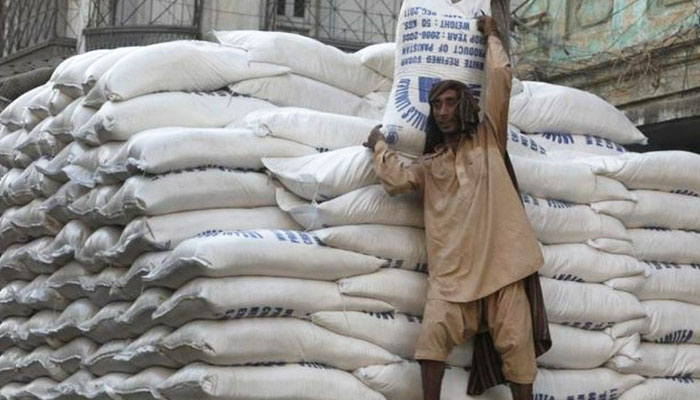Who will benefit the most from sugar exports?
It is estimated that PSMA could collectively earn around $90 million or nearly Rs25 billion from these exports
July 07, 2024

- PSMA members could earn $90m from sugar exports.
- Sugar mill owners swiftly capitalised on high int'l prices.
- Global sugar prices surge to a 3-month high this year.
LAHORE: Following permission granted by the government, sugar mill owners have swiftly capitalised on high international prices, making quick bucks at the cost of other stakeholders including farmers and consumers, market insiders claimed here on Saturday.
Driven by multiple factors boosting international sugar prices, local manufacturers stand to earn billions through exports of 0.15 million tonnes. Deals have reportedly been struck at prices ranging from $580 to as high as $610-$630 per tonne for various export destinations. Industry insiders anticipate the quick utilisation of the allotted export quota, with mill owners lobbying for further export permissions.
It is estimated that members of the Pakistan Sugar Mills Association (PSMA) could collectively earn around $90 million or nearly Rs25 billion from these exports, surpassing the $105 million recorded in 2023. If additional export permissions are granted, export values may even exceed the $223 million achieved in 2019.
While foreign exchange earnings are welcomed, concerns persist that sugar exports could disrupt the domestic supply chain. India, facing similar concerns, has maintained a ban on sugar exports despite bullish sentiments in the international market.
A senior official expressed concerns over lifting the ban on sugar exports, adding that exports should not have been allowed at all as this could create a shortfall in the country leading to price hikes. “Sugar’s is a perception-driven market. Despite tall claims by the sugar industry, there are chances that the price will escalate,” he warned.
According to him, the middlemen have started purchasing sugar in anticipation of a price surge in the future.
Senior PSMA member Muhammad Waheed Chaudhary held a different view of the commodity market situation. To a question about sugar exports, he said that trade should absolutely be allowed saying there should be no ban on the export of sugar at least until the next crushing season. At least 0.75-1 million tonnes of sugar should be allowed to export, he insisted.
Sugar is being sold below the cost of production in the domestic market, causing huge losses to the mills, he observed. Without timely permission for sugar exports, mills could face difficulty in paying the farmers’ dues. This factor may adversely affect sugarcane cultivation. This loss may translate into lower sugar production, necessitating sugar imports next year.
He emphasised that if the government continues to make decisions based on economics, Pakistan can be a member of the sugar export market like neighbouring India, creating a win-win situation for farmers and manufacturers.
Waheed Ch argued that if the government wanted to keep the price of sugar low by imposing a ban on the export of commodity, why did it allow the export of rice, vegetables, fruit and other goods without taking into account their domestic prices?
According to a report, global sugar prices have surged to a three-month high this year after a relatively flat trend until April 2024, driven by concerns over the reduced supply from India, the world’s second-largest sugar producer. India kept export restrictions in place to ensure sufficient domestic supplies as food inflation remained one of the highest drivers of price growth in the country, reducing availability in export markets.
Additionally, the report adds, below-average monsoon rains have negatively impacted Indian sugar production, with a reported 1.6% decline from October to April and more mills closing earlier than the previous year.
India extended restrictions on sugar exports from October 31, 2023 until further notice to maintain adequate domestic supplies. Moreover, in Thailand, record heat and below-average rainfall have resulted in the lowest sugarcane yield in 13 years, pushing global sugar prices higher.
Originally published in The News











